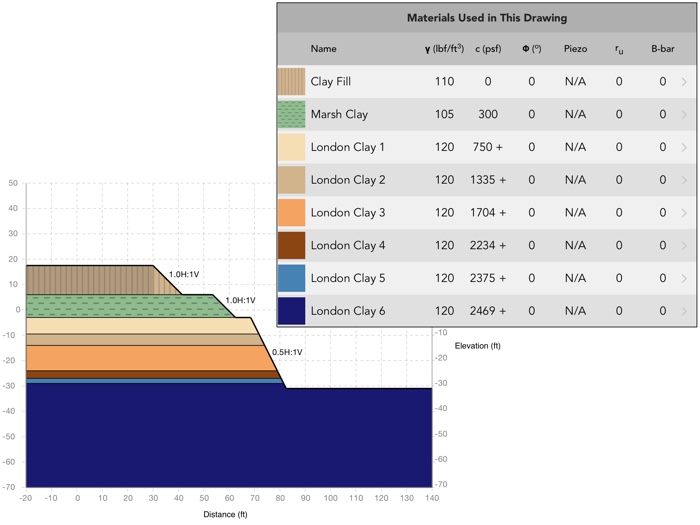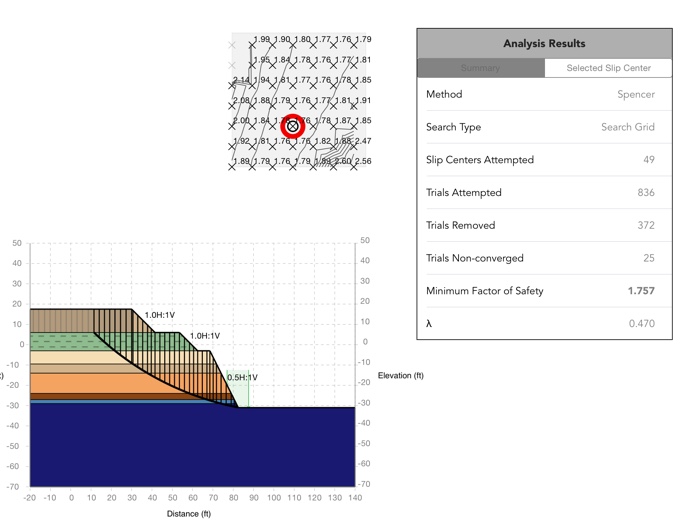- Index
-
Verification
Excavated Slope in Stiff Fissured Clay
The following problem for verification is the excavation described by Skempton and Rochelle (1965), and reviewed in Duncan, J.M., Wright, S.G., and Brandon, T.L., 2014. Soil Strength and Slope Stability, Second Edition. It is a 37 ft deep excavation, with the bottom 27 ft excavated at 0.5H:1V into London Clay. 11.5 feet of clay fill was placed above the original ground level, for a total slope height of 48.5 ft.For this analysis, the clay fill overlying the Marsh Clay was assumed to have cracked the full depth (11.5 ft). A tension crack zone was set for 11.5 ft depth and the clay fill was not assigned any strength parameters. The Marsh Clay was assigned a unit weight of 105 pcf and an undrained shear strength of 300 psf. The London Clay was assigned a an undrained shear strength that increased with depth, but at a decreasing rate. It was separated into 6 layers to model the strength-depth profile described in the problem review.
The geometry and material parameters are shown below.

As part of the review of the example problem, analyses were conducted using the Simplified Bishop's, Janbu's Uncorrected and Corrected, and Spencer's methods. The table below compares the published results to the same analyses carried out using MacSlope.
Published Results
MacSlope Results
Case
FOS
Bishop's Simplified
1.76
Janbu's Simplified (Uncorrected)
1.63
Janbu's Simplified (Corrected)
1.76
Spencer
1.76
Case
FOS
Bishop's Simplified
1.762
Janbu's Simplified (Uncorrected)
1.629
Janbu's Simplified (Corrected)
1.760
Spencer
1.757
For this problem, the MacSlope auto search revealed a lower factor of safety through the Marsh Clay than through the London Clay. However, as our interest was to compare the MacSlope results to those reviewed, a search grid and range was used to locate the reported factors of safety through the toe of the slope in London Clay. The analysis results for the Spencer method case are shown below.

Download the MacSlope file with the analysis results for this verification example here.